What Not To Wear On a Cruise: Essential Style Tips for Your Voyage
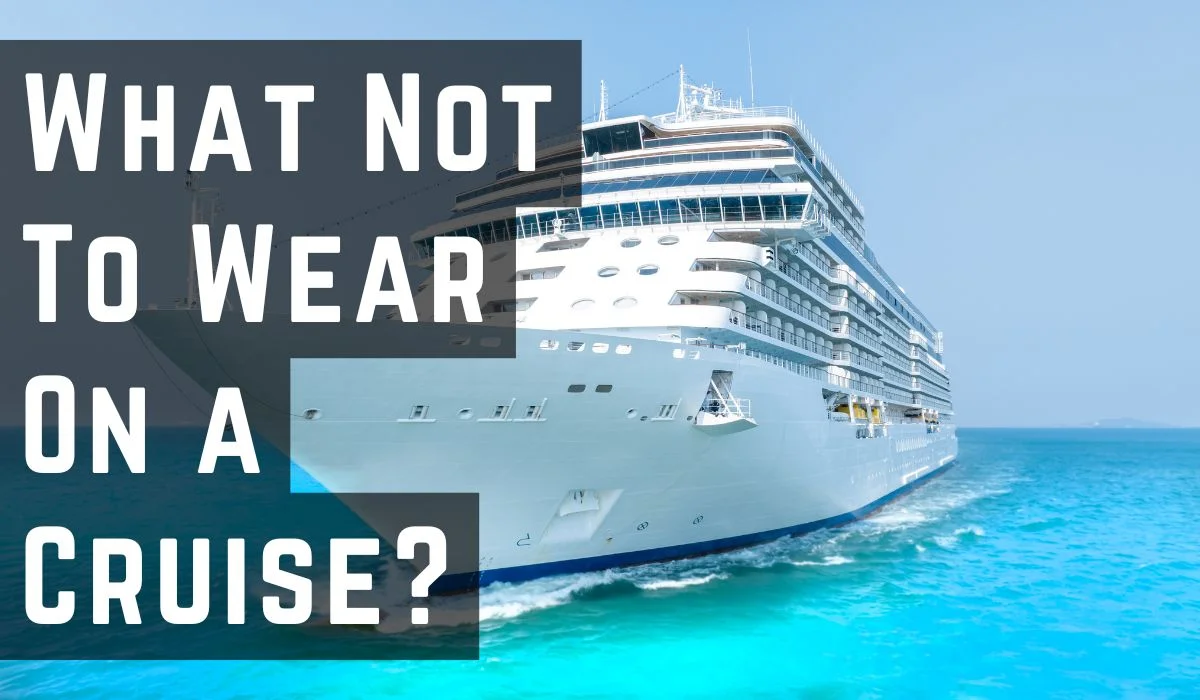
Packing for a cruise can be exciting, but selecting the right attire is crucial. Avoid wearing overly casual clothing, such as gym wear or beach cover-ups, at dining venues or formal events. Adhering to the dress codes ensures a more enjoyable experience and helps guests feel comfortable throughout their trip.
Understanding the ship’s atmosphere and the events planned is essential. For instance, swimsuits are appropriate at the pool but should be covered when moving about the ship. Dressing appropriately not only respects the space but also enhances personal experience aboard.
Cruise itineraries often include various activities, from elegant dinners to excursions. Choosing versatile outfits that can transition between different settings while avoiding items like ripped jeans or graphic tees will help maintain a polished appearance. Making thoughtful clothing choices allows guests to fully engage in the cruise experience without worrying about wardrobe missteps.
Understanding Cruise Attire Etiquette
Cruise attire etiquette varies by cruise line and destination. Passengers should always check the dress code guidelines prior to sailing. Most lines offer a combination of casual, formal, and themed nights.
Casual wear is typically acceptable for daytime activities onboard. This includes:
- T-shirts
- Shorts
- Swimwear (appropriate for pool areas)
For dining, attire can differ. Many cruise lines require smart casual or resort wear during dinner. This may include:
- Collared shirts
- Dresses
- Nice sandals
Formal nights are common on several cruises. On these evenings, guests should dress to impress. Suggestions for formal wear include:
- Suits or tuxedos for men
- Evening gowns or cocktail dresses for women
Personal grooming is also significant. Passengers should aim for a polished appearance while onboard. In addition, it’s essential to be mindful of cultural norms, especially when visiting ports.
Footwear is another key factor. Comfortable shoes are vital for excursions and exploring the ship. However, dress shoes are often required for formal dining.
Packing wisely can improve the cruise experience. Passengers should consider layering for changing weather. Ultimately, adhering to cruise attire etiquette enhances enjoyment and allows for a smooth onboard experience.
Clothing to Avoid for Daytime Activities
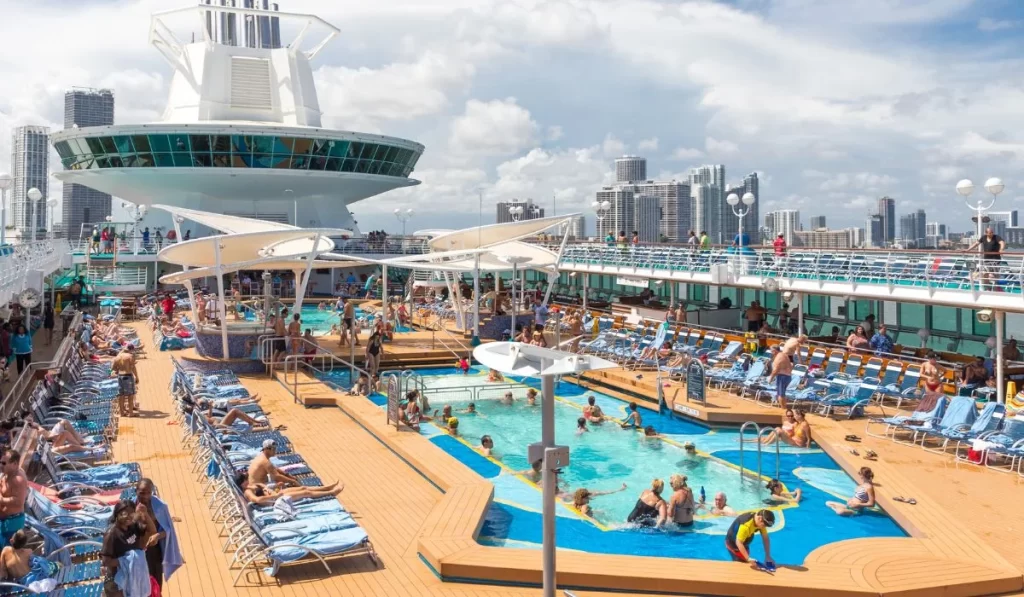
Choosing the right clothing for a cruise is essential for comfort and social appropriateness. Certain styles can detract from the overall experience, particularly during daytime activities. Below are specific types of clothing to avoid.
Inappropriate Swimwear
While swimwear is a staple for cruise trips, some choices are better left at home. Thongs and overly revealing bikinis can be inappropriate, especially in family-friendly areas. Opting for styles that provide coverage while still being fashionable is advisable.
Cover-ups are essential when moving from the pool to other areas of the ship. Ripped or tattered swimwear gives off a careless impression. Choosing well-fitted, tasteful options ensures guests remain presentable at all times.
Excessively Casual Wear
Casual clothing is often welcomed on cruises, but some items should be avoided. Oversized T-shirts and gym shorts might seem comfortable but can appear sloppy. Instead, light fabrics such as linen shirts or tailored shorts maintain a relaxed yet polished look.
Beach attire, like flip-flops and sweatpants, may be too informal for onboard dining or excursions. It’s crucial to assess the activity planned for the day and dress accordingly. Choosing smart-casual blends can enhance comfort while fitting the cruise atmosphere.
Impractical Footwear
Footwear plays a vital role in daytime comfort and safety. High heels and dressy sandals might not be suitable for walking on deck or participating in excursions. Selecting comfortable shoes such as sneakers or closed-toe sandals offers better support and stability.
Waterproof options are also beneficial, especially considering the ship’s various environments. Avoiding shoes that are difficult to walk in or dry quickly can prevent potential discomfort throughout the day. Keeping practicality and safety in mind will enhance the cruise experience.
Evening Wear Mistakes
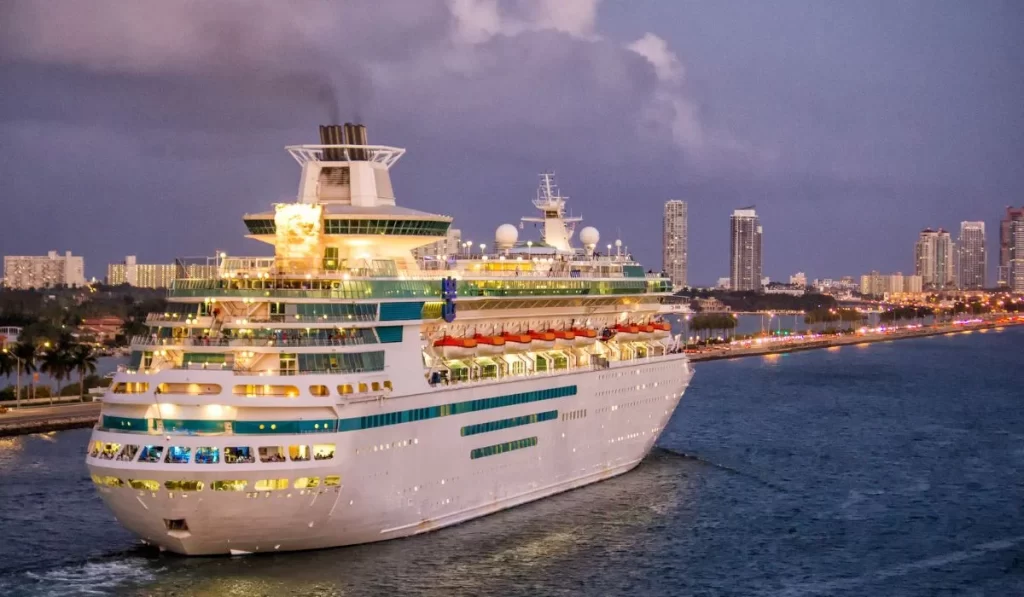
Choosing the right evening wear for a cruise can significantly impact the overall experience. Certain choices may lead to discomfort and social faux pas, which can be easily avoided.
Overly Casual Outfits
Casual outfits often miss the mark during evening events on a cruise. Items like flip-flops, shorts, and tank tops may be acceptable for daytime activities but fall short when the sun sets.
Cruise lines frequently emphasize a dress code for evening dining and entertainment, which typically leans towards smart casual or formal. Instead of overly casual wear, guests should opt for light, breathable fabrics like cotton or linen in smart-casual options such as dresses or collared shirts.
Wearing denim or sneakers may also be perceived as disrespectful in finer dining locations. By selecting outfits that align with the cruise’s ambiance, guests can enhance their experience and feel more comfortable in social settings.
Inappropriate Formalwear
When dressing for formal nights, choosing inappropriate formalwear can create discomfort and awkwardness. Attire that is too extravagant or mismatched can detract from the elegant atmosphere.
Men should avoid wearing suits that are too flashy or casual, such as brightly colored jackets or jeans. Instead, opting for a classic dark suit paired with a crisp shirt can look polished.
For women, ball gowns or overly embellished dresses may exceed expectations, leading to scrutiny. A cocktail dress or elegant evening gown in a conservative cut often works best. It is essential that attire reflects personal style while respecting the event’s formality to ensure an enjoyable evening.
Seasonal and Regional Cruise Wear Faux Pas
Choosing the right attire for a cruise involves understanding both weather patterns and cultural expectations. Ignoring these factors can lead to uncomfortable situations and social faux pas.
Ignoring Weather Appropriateness
Cruise itineraries often include diverse climates. Passengers should check the weather forecast for each port of call. Dressing inappropriately can hinder enjoyment.
For example, wearing heavy clothing in tropical destinations can lead to discomfort. Lightweight, breathable fabrics are recommended for warm areas. Conversely, packing shorts for cooler climates may leave travelers feeling cold.
An effective strategy is to layer clothing. This allows for adjustment based on changing temperatures throughout the day. Essential items might include:
- Lightweight jackets for evening breezes
- Sunscreen for daytime activities
- Flip-flops or sandals for relaxation
Planning according to weather ensures a more enjoyable cruise experience.
Neglecting Cultural Sensitivity
When cruising to international ports, it’s vital to respect local customs and dress codes. Neglecting cultural norms can lead to unintentional offense.
Local attire often reflects cultural values. For instance, visiting religious sites may require modest clothing. In some regions, swimwear is inappropriate unless at the beach or pool.
Travelers should research dress expectations for specific destinations. A few tips include:
- Covering shoulders and knees at certain sites
- Avoiding graphic t-shirts that may be offensive
- Wearing appropriate footwear for different environments
By showing cultural respect through wardrobe choices, cruisers can enrich their travel experience while avoiding negative interactions.
Accessories to Leave at Home
When preparing for a cruise, choosing the right accessories can enhance the experience. Some items, however, should be left at home to ensure comfort and ease throughout the journey.
Heavy Jewelry
Wearing heavy jewelry on a cruise can be both impractical and uncomfortable. Pieces like large statement necklaces or chunky bracelets may catch on clothing or equipment, leading to potential damage or loss.
Additionally, heavy jewelry can weigh down baggage. Packing lightly is essential, especially when moving between ports. Instead, opt for lightweight and minimal pieces that can complement outfits without bulk.
Consider choosing versatile jewelry that can be mixed and matched, creating different looks without taking up much space. This approach not only keeps style intact but also ensures practicality during excursions and onboard activities.
Inconvenient Bags
Inconvenient bags can create unnecessary hassle while traveling on a cruise. Large, bulky bags take up space and may be challenging to maneuver in crowded areas. They can also complicate boarding and disembarking.
Instead, it’s advisable to choose smaller, lightweight bags for daily use. Crossbody bags or compact backpacks offer practicality without being cumbersome. They make access to essentials easier, especially during shore excursions.
Packing a tote or beach bag for poolside relaxation can be beneficial, while leaving the oversized luggage behind. Minimizing bag size not only improves mobility but also ensures the cruise experience remains enjoyable and stress-free.
Considerations for Onboard Activities of a Cruise
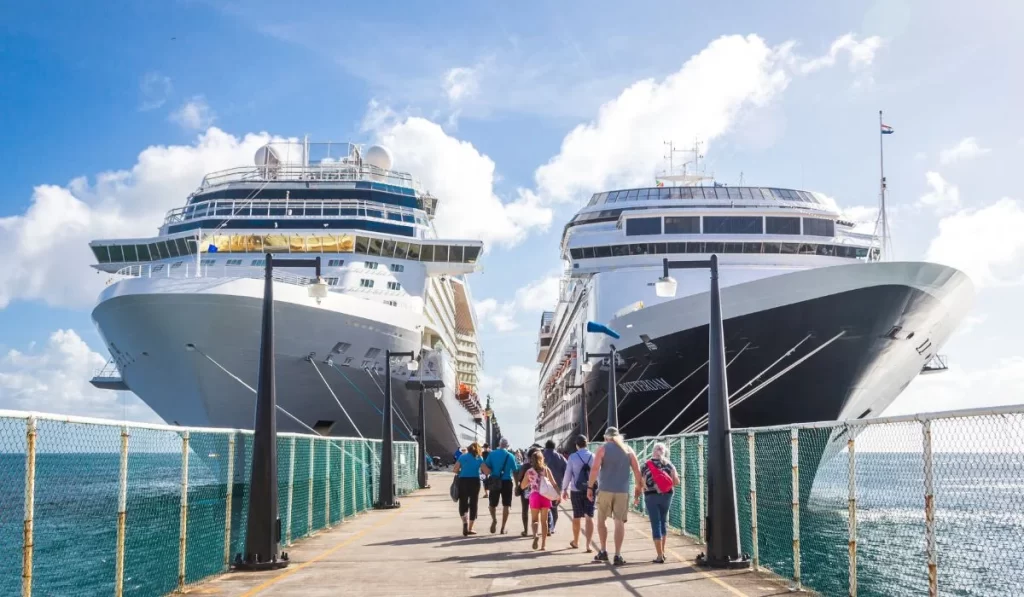
Choosing appropriate attire for onboard activities is essential to ensure comfort and enjoyment. Passengers should consider restrictions related to movement and the specific requirements of various activities.
Restrictive Clothing
Wearing clothing that is too tight can hinder movement during active pursuits. For example, fitted dresses or skinny jeans may limit flexibility during dance classes or fitness sessions.
Loose-fitting attire, such as flowy tops or stretchable pants, is often more suitable. Fabrics that allow for breathability, like cotton or moisture-wicking materials, ensure comfort throughout the day.
When planning outfits, consider layering options. A light cardigan or jacket can accommodate changes in temperature as activities shift from indoor to outdoor settings.
Inadequate Active Wear
Selecting suitable active wear is crucial, especially for those planning to engage in sports or fitness activities. Wearing inappropriate shoes can lead to discomfort or injury.
Athletic shoes should provide good support and traction. Styles such as cross-trainers or specific sports shoes are ideal. Avoiding flip-flops or other non-supportive footwear is important for any engaging activity.
Active wear should also be appropriate for the intensity of the activity. For example, breathable fabrics and loose cuts are better suited for high-impact activities. In contrast, more fitted gear can be comfortable for lighter exercises like yoga or Pilates.
What to Skip for Off-Ship Excursions
When planning for off-ship excursions, certain attire can hinder the experience. It is essential to choose clothing and footwear that suit the activities and environments encountered. Here are key items to avoid when stepping off the ship.
Unsuitable Shoes
Comfortable walking shoes are vital for off-ship excursions. High heels, flip-flops, and sandals lacking arch support can lead to discomfort or injury.
It’s best to avoid:
- Dress Shoes: These often lack cushioning and grip.
- Sport Sandals: While they may seem practical, they often provide insufficient support for long-distance walking.
- Heavy Boots: These can be cumbersome and too warm in tropical climates.
Instead, lightweight sneakers or hiking shoes offer support and durability, accommodating various terrains.
Non-Protective Clothing
Choosing the right clothing is crucial for comfort and safety during excursions. Fabrics that don’t offer protection from sun or insects can lead to discomfort.
Items to skip:
- Tank Tops and Short Shorts: Exposing too much skin may lead to sunburn or insect bites.
- Loose Clothing: This can get caught on branches or equipment, posing safety hazards.
Opt for lightweight, breathable fabrics that cover the skin, such as long-sleeved shirts and capris. Also, consider light jackets for unpredictable weather and sun hats for protection.
Special Event Attire Tips for Cruise
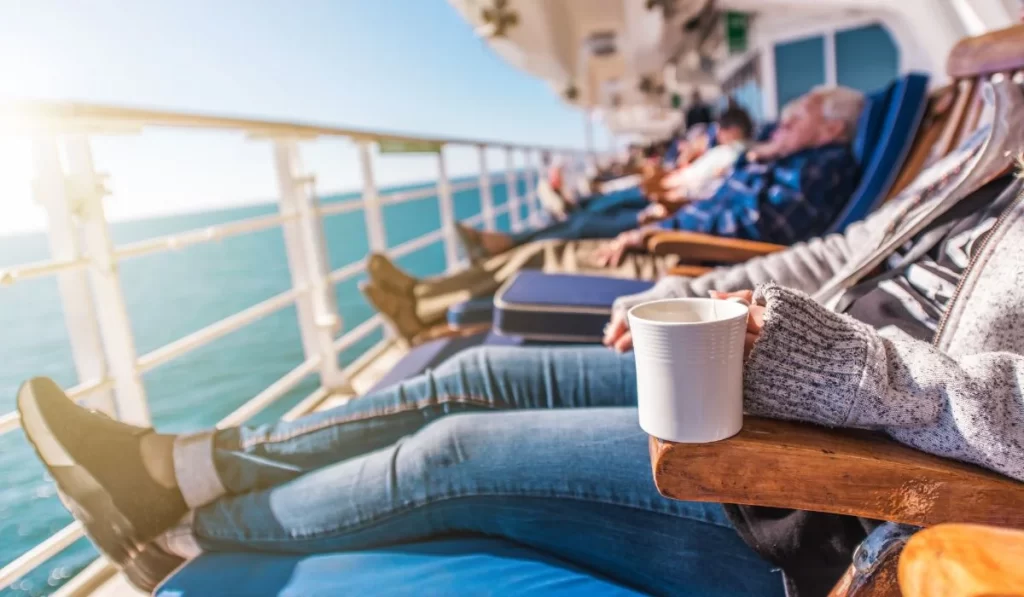
When attending special events on a cruise, it’s essential to strike the right balance between style and appropriateness. Certain choices can enhance or detract from the experience, making it important to consider theme coherence and outfit management.
Mismatched Theme Wear
Choosing attire that clashes with the cruise’s theme can make one stand out for the wrong reasons. Each special event often has a designated theme, such as “Tropical Night” or “Formal Dinner.” Wearing clothing that doesn’t align with these themes can feel uncomfortable and out of place.
To avoid this, always check the cruise itinerary for theme details. Coordinating colors and styles gives a more polished appearance. Neutral options, like navy or beige, can be accented with themed accessories—such as tropical prints or formal jewelry—to maintain theme integrity without overdoing it.
Excessive Outfit Changes
Changing outfits multiple times during a cruise can be impractical and confusing. While one might want to dress appropriately for each occasion, overpacking to accommodate constant changes can lead to distraction.
Instead of multiple outfits, opt for versatile pieces that can be mixed and matched. A classic cocktail dress can be dressed down with casual accessories for daytime events and elevated with statement jewelry for formal evenings. This approach saves space and ensures a more relaxed cruise experience. Consider planning a few key outfits that transition smoothly between activities while maintaining comfort and style.
Wrapping Up
Packing for a cruise is all about balance—bringing the essentials while avoiding items that will only weigh you down or make your trip less enjoyable. By steering clear of overly formal wear, impractical shoes, bulky accessories, and restrictive clothing, you’ll be able to fully embrace the relaxed and adventurous spirit of the cruise. Remember to check your cruise line’s dress code for guidance, but most importantly, pack for comfort and convenience to ensure a smooth and stress-free vacation at sea. Safe travels!



